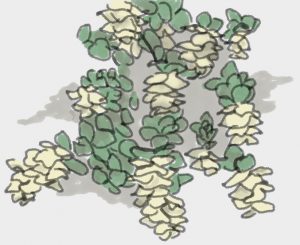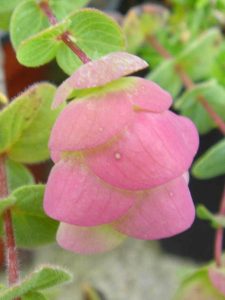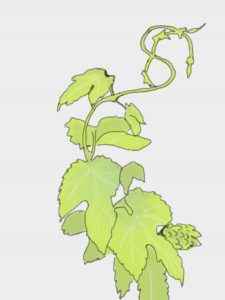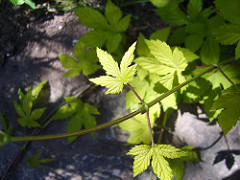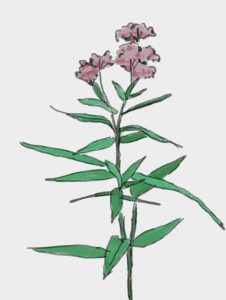 Fragaria chiloensis, coast strawberry
Fragaria chiloensis, coast strawberry
Family: Rosaceae
Description:
Native to the pacific coast, this low spreading, evergreen strawberry is recognizable for red stolons and glossy green foliage. Leaves are small, compared to other strawberry species, and trifoliate with toothed margins. White flowers with five petals and a central cluster of yellow stamens emerge in spring and early summer. Fruit is edible, though the least tasty of the strawberry varieties. Fruit is a rare occurrence, as this is a diecious plant that is seldom fertilized.
Growing conditions:
Fragaria chiloensis prefers well-drained, sandy soil in full sun. It is typically found on coastal bluffs or dunes.
Suitable uses:
This is a useful evergreen groundcover that spreads quickly. It is particularly useful on sandy sites, where other plants may struggle.

CC Image courtesy of Peter Pearsall/U.S. Fish and Wildlife Service on Flickr
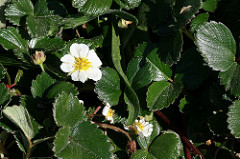
CC Image courtesy of David A. Hofmann on Flickr

